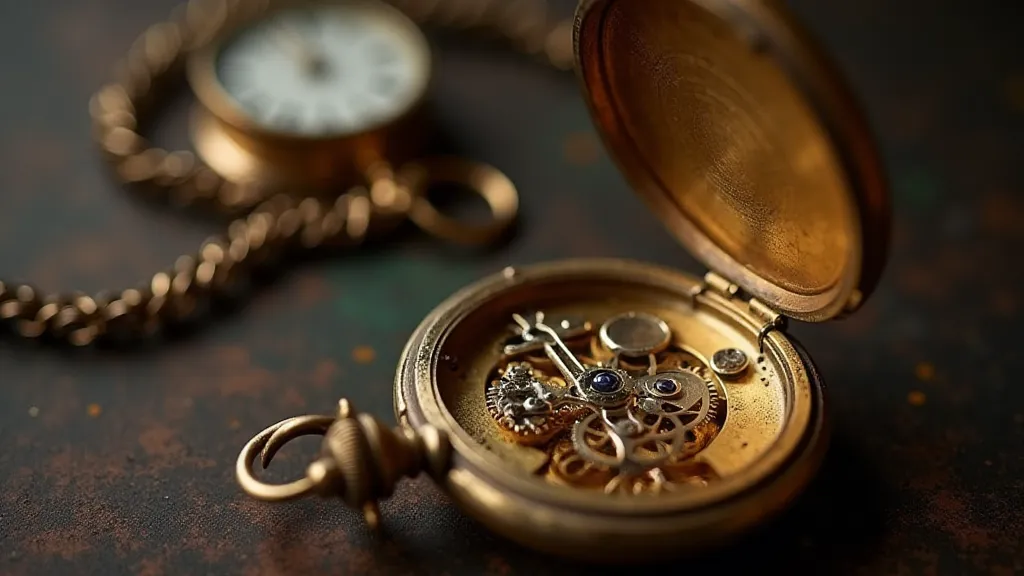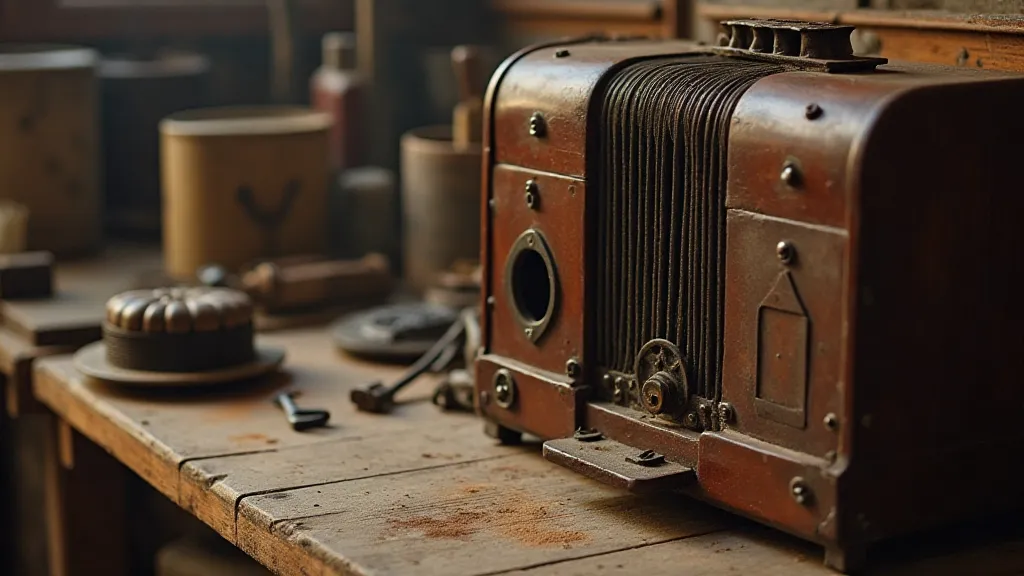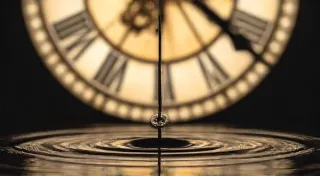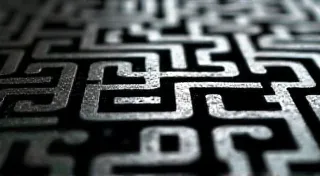Chronometric Cascades: Building Precise Timekeeping Systems with Arduino
There's a certain melancholy beauty in old things. I’m not just talking about furniture or pottery; I mean the deep-seated resonance of objects steeped in history, objects that once marked the rhythm of someone else’s life. I find it particularly poignant in antique accordions. The bellows, meticulously folded and re-folded countless times, the keys worn smooth by generations of fingers, each a silent testament to joyful music, quiet contemplation, and perhaps even heartbreak. These instruments don't just play notes; they echo the passage of time.
The fragility of these intricate mechanisms underscored something for me: the relentless march of time and the human desire to measure, to control, to capture it. That fascination with time, coupled with my love for electronics, naturally led me to explore precise timekeeping systems, and what better platform to build them on than the versatile Arduino?

The Allure of Accurate Time
We take precise time for granted now. Our phones, our computers – they seem to know the exact second. But that wasn's always the case. Prior to widespread electronic timekeeping, time was largely determined by sundials, water clocks, and pendulum clocks, each with its inherent inaccuracies. The need for more precise timekeeping drove innovation, influencing everything from navigation to industrial processes. Imagine the painstaking effort required to synchronize trains before reliable time signals were broadcast – a fascinating, and often chaotic, exercise in collective timing. Consider too, the increasing demands for precise timing in other areas, such as the rise of networked devices and the need for sophisticated data logging systems – tasks that require a level of synchronization previously unimaginable. Even managing power grids and monitoring energy consumption requires increasingly accurate timing – a challenge met by systems described in detail in Guardians of the Grid: Building Automated Power Monitoring Systems.
Now, with Arduino, we have the tools to build our own highly accurate timekeeping systems. It’s not just about telling the time; it's about understanding the principles behind it, and appreciating the ingenuity of those who came before us in their efforts to conquer time’s relentless flow.
Basic Timestamping with Arduino
At its simplest, timestamping involves recording an event with a precise time. Arduino's built-in functions provide a basic level of timekeeping, though their accuracy isn’t stellar. The `millis()` function provides the number of milliseconds since the Arduino started running, offering a rough measure of elapsed time. You can use this to timestamp sensor readings, track button presses, or even create rudimentary timers.
However, `millis()` resets if the Arduino is powered off or reset, making it unsuitable for applications requiring persistent timekeeping. It's a good starting point for understanding the concept of timestamping, but we need more robust solutions for accurate and continuous time recording.
Real-Time Clocks (RTCs): The Heart of Precise Timekeeping
Enter the Real-Time Clock (RTC) module. These chips, like the DS3231, are essentially dedicated timekeeping devices, often incorporating a crystal oscillator for exceptional accuracy. Unlike `millis()`, RTCs maintain the time even when the Arduino is powered off, thanks to a backup battery (typically a small coin cell). This is crucial for applications like data logging, network synchronization, and automated systems that need to know the precise time even after a power outage.
Connecting an RTC to an Arduino is straightforward. It typically involves just a few digital pins for communication via the I2C protocol. Arduino libraries simplify the process even further, providing functions to read the time, set the time, and handle date arithmetic. Using an RTC dramatically improves the reliability and accuracy of timekeeping systems. Data loggers, in particular, greatly benefit from the stability offered by RTCs; imagine building a system to monitor environmental factors and needing to know the exact moment a reading was taken – the possibilities are vast.
Network Time Synchronization (NTP): Staying Connected to the Global Clock
While RTCs provide excellent local timekeeping, they can still drift slightly over time. To maintain incredibly precise time, we can synchronize with Network Time Protocol (NTP) servers. NTP servers are strategically placed around the world, providing highly accurate time signals derived from atomic clocks and GPS satellites.
Arduino boards with Ethernet or Wi-Fi capabilities can connect to the internet and retrieve the current time from an NTP server. The process involves sending a request to the NTP server and receiving a response containing the current time. This data is then used to correct the RTC, ensuring that your Arduino’s time stays perfectly synchronized with the global clock. The synchronization doesn't happen continuously, but at regular intervals (e.g., every few minutes or hours) to minimize network traffic and power consumption. The challenges of reliable wireless communication also come into play here - robust design and careful consideration of interference are critical for maintaining consistent access to NTP servers, aspects touched upon in more detail when exploring Shadows of the Digital Frontier: Exploring the Potential of Low-Power Wireless Networks.

Beyond Simple Timekeeping: Sensor Fusion and Navigation
Accurate time isn't just crucial for displaying the current hour; it’s a foundational element in a multitude of sophisticated applications. Consider systems that combine data from multiple sensors to understand complex environments – sensor fusion. The ability to correlate data points in time is absolutely essential for these systems to function effectively. Furthermore, the need for precise timing is critical for autonomous systems that require accurate positioning and navigation. Building these systems often involves integrating data from GPS modules, inertial measurement units (IMUs), and other sensors – a challenge that highlights the importance of robust time synchronization. The principles of sensor fusion extend beyond simple timekeeping, encompassing a broader range of techniques for extracting meaningful information from disparate sources. The intricacies of achieving accurate and reliable data integration are explored in detail in The Cartographer’s Compass: Navigating Sensor Fusion for Autonomous Systems.
Combining Techniques: A Robust Timekeeping System
The most robust timekeeping systems often combine these techniques. Imagine an Arduino-powered system logging environmental data. It could use an RTC to maintain the time locally, synchronize with an NTP server periodically, and timestamp each data reading. Even if the network connection is lost, the RTC ensures that the time continues to be accurately recorded, and when the connection is restored, the system can resynchronize with the NTP server.
This layered approach provides redundancy and resilience, ensuring that the timekeeping system remains accurate and reliable even in challenging conditions. It's a testament to the power of combining simple components to achieve complex functionality. Furthermore, creating displays to present this data often requires translating numerical data into visual or even sensory feedback – a fascinating intersection explored further in Chromatic Reverberations: Building Data-Driven Color Changing Displays.
Beyond Time: Restoration and Appreciation
Building these timekeeping systems has given me a newfound appreciation for the craftsmanship of antique instruments, like those accordions I cherish. Consider the skill required to build a mechanical clock, with its intricate gears, springs, and escapement. The precision, the attention to detail – it’s truly remarkable. Restoring these objects isn't just about repairing a broken mechanism; it's about preserving a piece of history, a testament to human ingenuity and perseverance.
Similarly, collecting these instruments—be they accordions, pocket watches, or antique clocks—isn’t merely about accumulating possessions. It’s about connecting with the past, understanding the evolution of technology, and appreciating the artistry of previous generations. Each tick, each fold of a bellows, each perfectly placed gear whispers a story of a bygone era. These instruments often utilize complex feedback loops and control systems to achieve their remarkable precision - principles that are equally applicable to modern data acquisition and automation systems.

The Future of Timekeeping: Miniaturization and Precision
The advancements in timekeeping technology continue at a rapid pace. We've moved from sundials and water clocks to atomic clocks and GPS satellites, each representing a significant leap forward in accuracy and precision. As technology continues to evolve, we can expect even more sophisticated timekeeping systems to emerge, blurring the lines between the physical and digital worlds. The potential for miniaturization is particularly exciting, envisioning self-calibrating timekeeping systems embedded within microchips, powering future generations of smart devices and autonomous systems. The implications for scientific research, industrial processes, and everyday life are profound. The increasing demands for precision extend to fields such as financial markets, high-frequency trading, and scientific research, where even the slightest timing errors can have significant consequences.
Conclusion: A Harmonious Blend of Time and Technology
From the intricate mechanics of antique accordions to the cutting-edge technology powering modern timekeeping systems, the quest for accurate time has driven innovation across centuries. The Arduino platform provides an accessible and versatile tool for exploring these concepts, allowing enthusiasts and professionals alike to build custom timekeeping systems and experiment with new applications. The combination of historical appreciation and technological exploration offers a unique perspective on the enduring significance of time and its impact on human endeavor. The principles of precision, reliability, and innovation, exemplified by the craftspeople of the past and the engineers of the present, will continue to shape the future of timekeeping and its countless applications.





